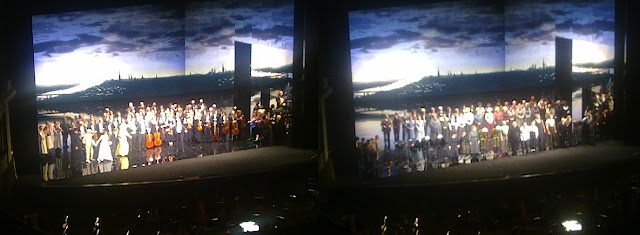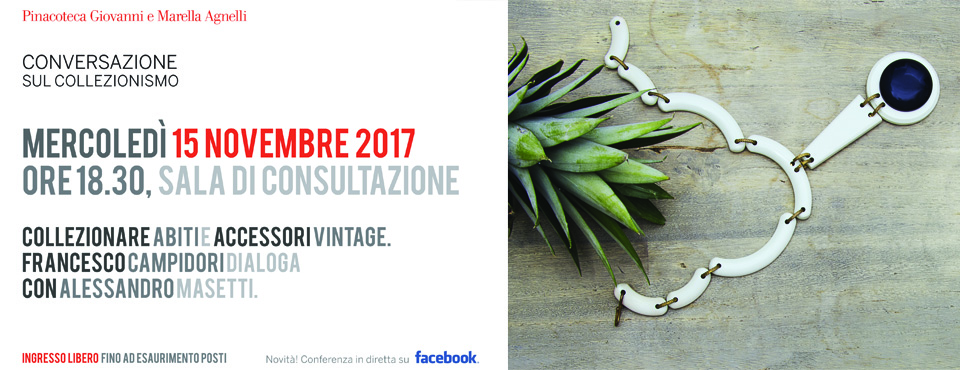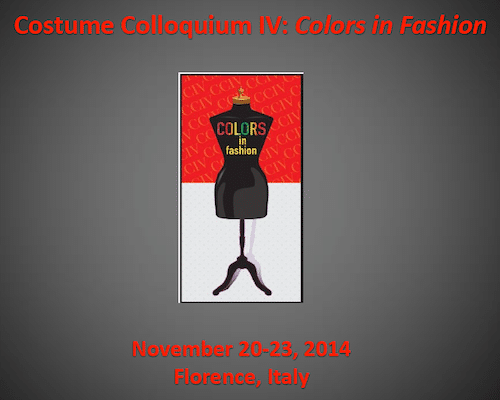 |
La sera del 4 Maggio ho
avuto l’onore di partecipare alla Prima rappresentazione dell’opera
Der Rosenkavalier del 75° Festival del Maggio Musicale Fiorentino in
veste di commentatore per i canali di social network del Teatro. Per
Firenze la “Prima del Maggio” è uno degli appuntamenti più
importanti dell’anno, oltre all’inizio del Festival, infatti,
corrisponde al periodo in cui la città fiorisce in tutto il suo
splendore. Il Der Rosenkavalier di Richard Strauss e Hugo von
Hofmannsthal, mancava da Firenze dal 1989 e per questa edizione il
grande direttore Zubin Mehta, al suo debutto nel Rosenkavalier, ha
collaborato con il regista Eike Gramss, lo scenografo Hans
Schavernoch e la costumista Catherine Voeffray.
avuto l’onore di partecipare alla Prima rappresentazione dell’opera
Der Rosenkavalier del 75° Festival del Maggio Musicale Fiorentino in
veste di commentatore per i canali di social network del Teatro. Per
Firenze la “Prima del Maggio” è uno degli appuntamenti più
importanti dell’anno, oltre all’inizio del Festival, infatti,
corrisponde al periodo in cui la città fiorisce in tutto il suo
splendore. Il Der Rosenkavalier di Richard Strauss e Hugo von
Hofmannsthal, mancava da Firenze dal 1989 e per questa edizione il
grande direttore Zubin Mehta, al suo debutto nel Rosenkavalier, ha
collaborato con il regista Eike Gramss, lo scenografo Hans
Schavernoch e la costumista Catherine Voeffray.
On the evening of May 4th
I had the honor to attend the opening night of the 75th Festival del
Maggio Musicale Fiorentino as an official social network commentator
for the opera Der Rosenkavalier . The “Prima del Maggio”,
the opening night of the Maggio Musicale Festival, is one of the
highlights of the year for Florence and it corresponds to the period
in which the city flourishes in all its splendor. Der Rosenkavalier
by Richard Strauss and Hugo von Hofmannsthal, was missing from
Florence since 1989 and this year the great conductor Zubin Mehta, in
his debut in Der Rosenkavalier, has collaborated with director Eike
Gramss, the production designer Hans Schavernoch and the costume
designer Catherine Voeffray.
I had the honor to attend the opening night of the 75th Festival del
Maggio Musicale Fiorentino as an official social network commentator
for the opera Der Rosenkavalier . The “Prima del Maggio”,
the opening night of the Maggio Musicale Festival, is one of the
highlights of the year for Florence and it corresponds to the period
in which the city flourishes in all its splendor. Der Rosenkavalier
by Richard Strauss and Hugo von Hofmannsthal, was missing from
Florence since 1989 and this year the great conductor Zubin Mehta, in
his debut in Der Rosenkavalier, has collaborated with director Eike
Gramss, the production designer Hans Schavernoch and the costume
designer Catherine Voeffray.
 |
| The set – inside the palace and with Wien panorama |
L’allestimento ricreava
il clima della Vienna di Maria Teresa d’Asburgo riproponendo sullo
sfondo la prospettiva fotografica dell’Hofburg di Vienna che
attraverso una parete di specchi rotante si ingrandiva o rimpiccoliva
a seconda della scena. Questo espediente non è certo una novità, e
riecheggia il gusto barocco della “maraviglia,” ma è
riuscito sicuramente nel suo intento di voler trasportare il pubblico
sulla scena poiché negli specchi si riflettevano sia l’orchestra che
gli spettatori. Nota dolente per i costumi, che sembravano non avere
una collocazione temporale spaziale, agli abiti degli ufficiali
austriaci si alternavano mise americane anni ’20, abiti ottocenteschi
e le tenute maschili tardo settecentesche con applicazioni e ricami.
Un tripudio di epoche frutto del mix tra la data di stesura
dell’opera (1909-1911) e l’epoca in cui era ambientata (1740 circa)
con abiti che per quanto riuscissero a “caratterizzare”
ogni personaggio, nel complesso stonavano tra loro. Interessante però
la scelta dei dettagli, sfortunatamente apprezzabili solo dagli
spettatori in platea, come i maxi fiocchi bianchi sulle scarpe del
Signor Faninal, simbolo della recente acquisizione del titolo
nobiliare o la lunga giacca ricamata d’argento del giovane Octavian
che ricordava le mise degli ufficiali di corte presenti in tantissimi
ritratti rococò.
il clima della Vienna di Maria Teresa d’Asburgo riproponendo sullo
sfondo la prospettiva fotografica dell’Hofburg di Vienna che
attraverso una parete di specchi rotante si ingrandiva o rimpiccoliva
a seconda della scena. Questo espediente non è certo una novità, e
riecheggia il gusto barocco della “maraviglia,” ma è
riuscito sicuramente nel suo intento di voler trasportare il pubblico
sulla scena poiché negli specchi si riflettevano sia l’orchestra che
gli spettatori. Nota dolente per i costumi, che sembravano non avere
una collocazione temporale spaziale, agli abiti degli ufficiali
austriaci si alternavano mise americane anni ’20, abiti ottocenteschi
e le tenute maschili tardo settecentesche con applicazioni e ricami.
Un tripudio di epoche frutto del mix tra la data di stesura
dell’opera (1909-1911) e l’epoca in cui era ambientata (1740 circa)
con abiti che per quanto riuscissero a “caratterizzare”
ogni personaggio, nel complesso stonavano tra loro. Interessante però
la scelta dei dettagli, sfortunatamente apprezzabili solo dagli
spettatori in platea, come i maxi fiocchi bianchi sulle scarpe del
Signor Faninal, simbolo della recente acquisizione del titolo
nobiliare o la lunga giacca ricamata d’argento del giovane Octavian
che ricordava le mise degli ufficiali di corte presenti in tantissimi
ritratti rococò.
The set reproduced a
photographic perspective of the Hofburg palace at the time of Maria
Theresa of Habsburg. The background got bigger or smaller depending
on the scene, thanks to a rotating mirror wall. This expedient is not
a novelty and it echoes the Baroque “astonishment” effect,
but it succeeded in his aim of taking the audience on the stage
because of the mirror reflections. Unfortunately the costumes seemed
not to have a temporal or spacial location: the Austrian officers
uniforms were alternated to American 20’s dresses, nineteenth
garments for ladies and late eighteenth-century embroidered male
clothes. It was like the result of the mix between the date of the
drafting of the work (1909-1911) and the era in which it was set
(1740); and even if each costume was able to “characterize”
each character, in the complex they were clashing with each other.
Interestingly, however, the choice of details (unfortunately, only
visible by the audience of the stalls) like the big white bows on the
shoes of Mr. Faninal, symbol of the recent acquisition of noble
titles; or the long silver embroidered jacket of Octavian,
reminiscent of the officers’ portraits of the court.
photographic perspective of the Hofburg palace at the time of Maria
Theresa of Habsburg. The background got bigger or smaller depending
on the scene, thanks to a rotating mirror wall. This expedient is not
a novelty and it echoes the Baroque “astonishment” effect,
but it succeeded in his aim of taking the audience on the stage
because of the mirror reflections. Unfortunately the costumes seemed
not to have a temporal or spacial location: the Austrian officers
uniforms were alternated to American 20’s dresses, nineteenth
garments for ladies and late eighteenth-century embroidered male
clothes. It was like the result of the mix between the date of the
drafting of the work (1909-1911) and the era in which it was set
(1740); and even if each costume was able to “characterize”
each character, in the complex they were clashing with each other.
Interestingly, however, the choice of details (unfortunately, only
visible by the audience of the stalls) like the big white bows on the
shoes of Mr. Faninal, symbol of the recent acquisition of noble
titles; or the long silver embroidered jacket of Octavian,
reminiscent of the officers’ portraits of the court.
 |
| The cast and the orchestra for the final applause |
Il compito mio e degli altri 19 commentatori social network consisteva nell’aggiornare in tempo reale
gli status Fb e Twitter del Teatro del Maggio Musicale Fiorentino per
permettere agli spettatori a casa (che ascoltavano l’opera tramite
diretta radio) di “vedere” la rappresentazione attraverso
le nostre parole, cercando di trasportarli anche nella parte mondana
raccogliendo le opinioni del pubblico e fotografando le importanti
personalità del mondo della cultura durante gli intervalli nel
foyer.
gli status Fb e Twitter del Teatro del Maggio Musicale Fiorentino per
permettere agli spettatori a casa (che ascoltavano l’opera tramite
diretta radio) di “vedere” la rappresentazione attraverso
le nostre parole, cercando di trasportarli anche nella parte mondana
raccogliendo le opinioni del pubblico e fotografando le importanti
personalità del mondo della cultura durante gli intervalli nel
foyer.
I, and the other 19 social network commentators, have to update in real time the Fb and
Twitter status to allow radio audience to “see” the
representation through our words, trying to show them even the social
part of the evening, reporting the opinions of the audience during
the intermissions and taking pictures of the important personalities
busy chatting in the foyer.
Twitter status to allow radio audience to “see” the
representation through our words, trying to show them even the social
part of the evening, reporting the opinions of the audience during
the intermissions and taking pictures of the important personalities
busy chatting in the foyer.
| The great ballet dancer Carla Fracci and husband (Giuseppe Cabras/New Press Photo) |
La rappresentazione è
stata un vero successo con 10 minuti consecutivi di applausi e un
continuo acclamare il maestro Zubin Mehta ogni volta che risaliva sul
podio a fine intervallo. Bravissimi gli interpreti come la
“Marescialla” di Angela Denoke, simile ad un’autoritaria
matrona nella sua presenza scenica, che rimpiangeva i tempi della
gioventù ormai appassita; l’antipatico e sbruffone “Barone
Ochs” di Kristinn Sigmundsson, bravissimo nella sua
interpretazione a tratti comica; il giovane ”Octavian” di
Caitlin Hulcup e la “Annina” di Anna Maria Chiuri,
particolarmente apprezzati dal pubblico. Secondo il mio parere
personale è stata davvero una buonissima interpretazione resa
coinvolgente grazie all’espressività del cast e alla raffinata
direzione di Metha che è riuscito a trasmettere in pieno la
malinconia del ricordo della Vienna del passato e dell’inesorabile
scorrere del tempo.
stata un vero successo con 10 minuti consecutivi di applausi e un
continuo acclamare il maestro Zubin Mehta ogni volta che risaliva sul
podio a fine intervallo. Bravissimi gli interpreti come la
“Marescialla” di Angela Denoke, simile ad un’autoritaria
matrona nella sua presenza scenica, che rimpiangeva i tempi della
gioventù ormai appassita; l’antipatico e sbruffone “Barone
Ochs” di Kristinn Sigmundsson, bravissimo nella sua
interpretazione a tratti comica; il giovane ”Octavian” di
Caitlin Hulcup e la “Annina” di Anna Maria Chiuri,
particolarmente apprezzati dal pubblico. Secondo il mio parere
personale è stata davvero una buonissima interpretazione resa
coinvolgente grazie all’espressività del cast e alla raffinata
direzione di Metha che è riuscito a trasmettere in pieno la
malinconia del ricordo della Vienna del passato e dell’inesorabile
scorrere del tempo.
The performance was a
success with 10 consecutive minutes of applause and a loud acclaim
each time the master Zubin Mehta went back on the podium at the end
of the intermissions. Talented performers such as: the “Marshal’s
wife” by Angela Denoke, similar to an authoritarian matron in
her stage presence, who regretted the passing of the time; the
obnoxious “Baron Ochs” by Kristinn Sigmundsson, excellent
in his comic interpretation; the young “Octavian” by
Caitlin Hulcup and “Annina” by Anna Maria Chiuri were
particularly appreciated by the audience. In my personal opinion it
has been a very good performance thanks to the expressiveness of the
cast and the refined direction. Mehta has been able to transmit the
melancholic memory of the ancient Wien and of the inexorable passage
of time.
success with 10 consecutive minutes of applause and a loud acclaim
each time the master Zubin Mehta went back on the podium at the end
of the intermissions. Talented performers such as: the “Marshal’s
wife” by Angela Denoke, similar to an authoritarian matron in
her stage presence, who regretted the passing of the time; the
obnoxious “Baron Ochs” by Kristinn Sigmundsson, excellent
in his comic interpretation; the young “Octavian” by
Caitlin Hulcup and “Annina” by Anna Maria Chiuri were
particularly appreciated by the audience. In my personal opinion it
has been a very good performance thanks to the expressiveness of the
cast and the refined direction. Mehta has been able to transmit the
melancholic memory of the ancient Wien and of the inexorable passage
of time.
 |
| Foyer during the first intermission – so many dark dresses compared to the past years |
Prendere parte a questa iniziativa social del Maggio Musicale è stata un
vero e proprio onore, e per la prima volta mi ha permesso di vivere la
Prima del Maggio non più come un classico spettatore, ma come parte
attiva del “Teatro”, facendo da tramite tra la rappresentazione
(evento elitario, visti anche i prezzi proibitivi dei biglietti) ed
il mondo di melomani e appassionati in collegamento via radio e web.
vero e proprio onore, e per la prima volta mi ha permesso di vivere la
Prima del Maggio non più come un classico spettatore, ma come parte
attiva del “Teatro”, facendo da tramite tra la rappresentazione
(evento elitario, visti anche i prezzi proibitivi dei biglietti) ed
il mondo di melomani e appassionati in collegamento via radio e web.
This experience has been
a real honor for me and for the first time allowed me to live the
“Prima del Maggio”, not as a classic spectator but as an
active part of the Maggio Theatre, being the link between the
performance (elite event, due to prohibitive ticket prices) and the
music lovers on the web.
a real honor for me and for the first time allowed me to live the
“Prima del Maggio”, not as a classic spectator but as an
active part of the Maggio Theatre, being the link between the
performance (elite event, due to prohibitive ticket prices) and the
music lovers on the web.


E’ sempre bellissimo andare a teatro. Se poi tra gli ospiti c’è anche Carla Fracci, beh tanto meglio. 🙂
Domenico.
Ale, sempre più bravo.
Il trascorrere del tempo sarà inesorabile come dici tu, ma guarda che classe ha ancora la signora Fracci! complimenti commentator Alessandro per il tuo eccitante e prestigioso incarico!!!
It looks super cool 😀
xx
http://www.sickbytrend.com
Complimenti per aver partecipato ad un evento così esclusivo.
Ti volevo inoltre ringraziare per il tuo commento sulla mia pagina, l’ho apprezzato davvero tantissimo!
sei molto invidiabile per essere stato invitato a questo evento.
l’atmosfera dev’essere stata meravigliosa..
un abbraccio
i.